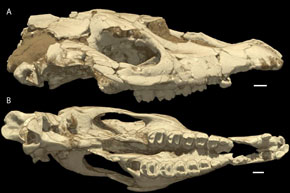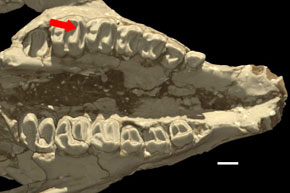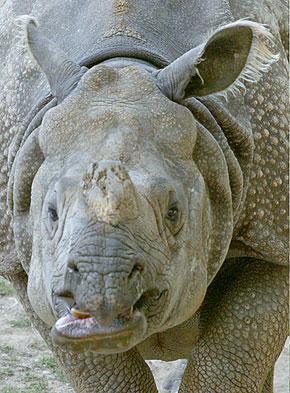Ceratomorpha
Ceratomorpha: Tapirs and rhinos are more closely related to each other than they are to horses, and form a group called the Ceratomorpha. The fossil record shows that tapirs and rhinos were once various diverse but most are now extinct. Many species have very specialized skulls and skeletons. However despite this diversity, all ceratomorphs have one character in common; very strongly developed transverse crests on their upper molar teeth. Ceratomorphs were very successful in the early and middle part of the Eocene. Homogalax is a good example of one of these early ceratomorphs. It was very small relative of rhinos and tapirs that appeared during the early Eocene about 55 million years ago shortly after then first appearance of the earliest relatives of horses. Although living tapirs are much larger than Homogalax and other early ceratomorphs, their skeletons are not much different with four toes on each forefoot and three toes on each hindfoot.


Left: Two skulls of the early ceratomorph Homogalax. A) AMNH 42891, lateral view, B) SDSM 59566. Scale bar = 10mm. Reproduced from Colbert, 2005. Right: Ventral view of skull of Homogalax (AMNH 42891). Arrow shows transverse crest on molar that is typical of ceratomorphs. Scale bar = 10mm. Modified from Colbert, 2005.

